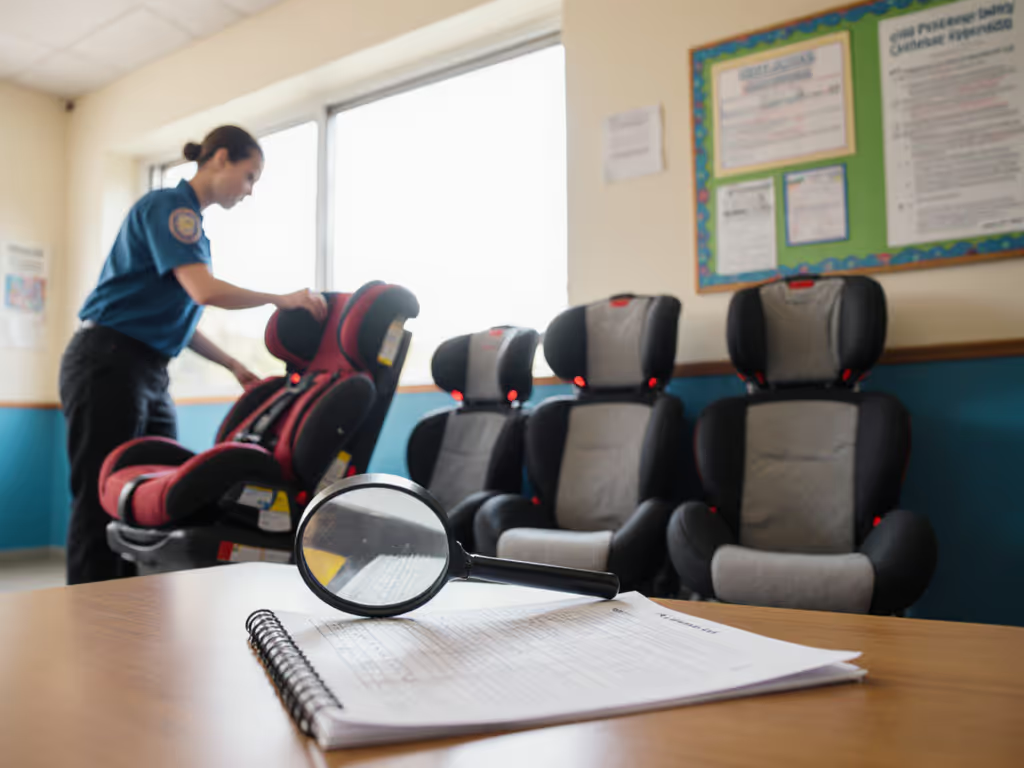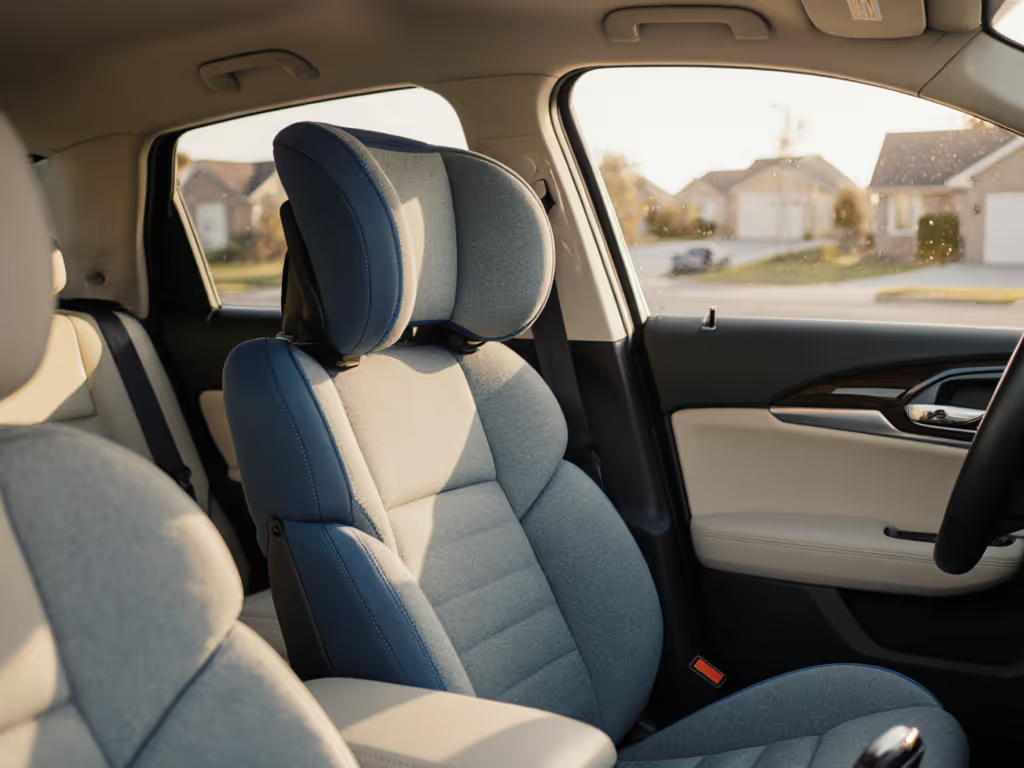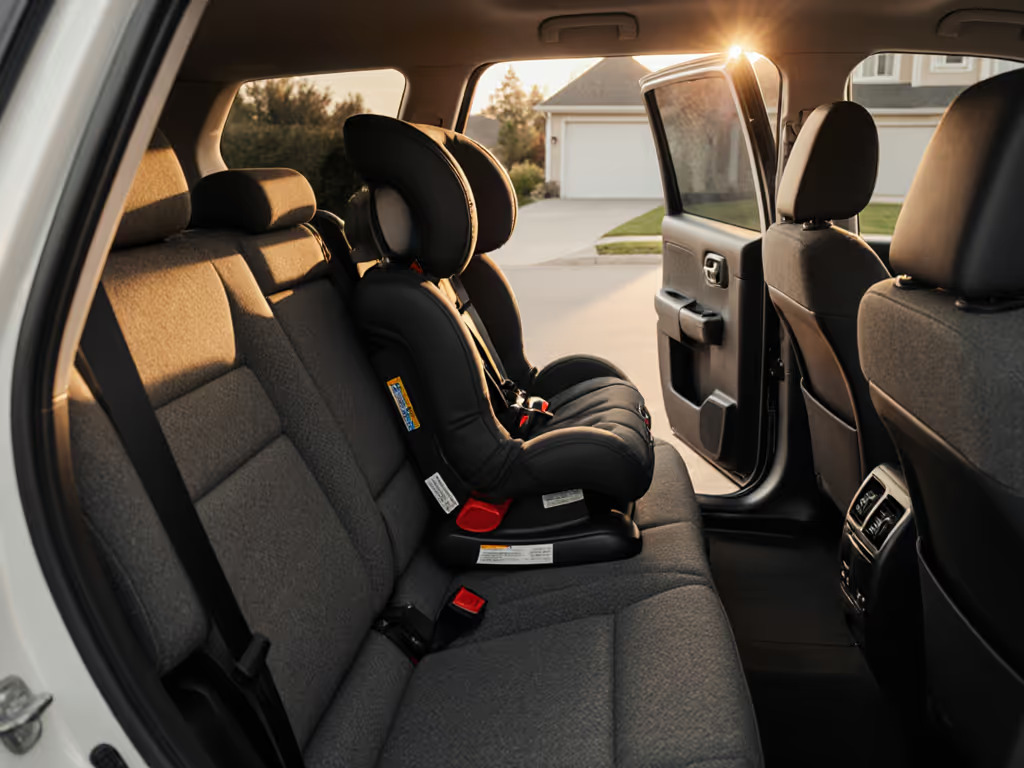
7 Essential Car Seat Comfort Features for Safer Rides

Did you know that over 60 percent of parents worry about their child's comfort and safety on every car trip? From fast growth spurts to spilled snacks, a car seat faces many challenges as your child changes. The right features help protect their developing body, prevent overheating, and make long drives bearable. Understanding what makes a car seat safe and comfortable can make every ride smoother and give you real peace of mind.
Quick Summary
| Takeaway | Explanation |
|---|---|
| 1. Adjust headrests regularly for safety. | Ensure proper head and neck alignment by adjusting the headrest to match your child's height as they grow. |
| 2. Choose breathable fabrics for comfort. | Opt for car seat fabrics that promote air circulation and moisture wicking to keep your child comfortable during rides. |
| 3. Look for ergonomic padding in car seats. | Select car seats with supportive padding that reduces pressure points and enhances comfort during long trips. |
| 4. Utilize multiple recline positions. | Adjust the recline angle based on your child's growth to support proper spine alignment and comfort during travel. |
| 5. Invest in easy-clean covers. | Select car seats with materials that repel stains and are machine washable to maintain hygiene and ease of cleaning. |
1. Adjustable Headrests for Growing Children
Your child's car seat headrest is more than just a cushioned support it is a critical safety feature that adapts as your little one grows. Adjustable headrests provide customized protection by ensuring proper head and neck alignment during every stage of childhood development.
As children rapidly change in height and body proportions, a static headrest becomes quickly obsolete. An adjustable headrest moves vertically and horizontally to match your child's current size, maintaining optimal crash protection. This dynamic design prevents dangerous gaps between the headrest and your child's head that could increase injury risk during sudden stops or collisions.
To maximize safety, check your car seat's headrest adjustment mechanism every few months. Look for these key adjustment indicators:
- Clear height markings showing recommended positions
- Simple one hand release mechanisms
- Smooth sliding tracks without resistance
- Visible click points confirming secure placement
Parents should remember that proper headrest positioning is not a one time setup. Your child's growth means regular readjustments are necessary. Aim to align the top of the headrest with the top of your child's ears for maximum protection. This small action can significantly reduce potential neck and head injury risks during unexpected road incidents.
2. Breathable Fabrics for Temperature Control
Car seat comfort goes far beyond padding and design car seat fabrics play a critical role in maintaining your child's body temperature and overall comfort. Breathable materials prevent overheating and excessive sweating which can make car rides uncomfortable and potentially disruptive for both children and parents.
Children are more sensitive to temperature fluctuations compared to adults. Their smaller body mass and less efficient temperature regulation make them prone to quick heating or cooling. Breathable fabrics work through advanced textile technologies that allow air circulation while maintaining a consistent microclimate around your child's body. These specialized materials wick away moisture and enable heat transfer preventing uncomfortable temperature buildups.
When selecting a car seat with breathable fabrics look for these key features:
- Natural fiber blends like cotton and bamboo
- Mesh panel inserts for enhanced ventilation
- Moisture wicking synthetic materials
- Fabrics with microscopic air channels
Parents should also consider seasonal variations when choosing car seat fabrics. Lightweight breathable materials work best during warmer months while slightly thicker fabrics with thermal properties provide comfort during colder seasons. A good breathable fabric adapts to changing environmental conditions keeping your child comfortable throughout various weather conditions and car ride durations.
3. Enhanced Padding for Long Trip Comfort
Long car journeys challenge even the most patient children and the right car seat padding can transform a potentially stressful travel experience into a comfortable adventure. Enhanced padding is not just about softness it is a strategic design element that supports your child's body during extended periods of sitting.
The science behind enhanced padding involves understanding how children experience physical stress during travel. Ergonomic padding distributes body weight evenly reducing pressure points that can cause discomfort and fatigue. Memory foam and multilayer cushioning technologies help absorb road vibrations and minimize the jarring movements that can make children restless during long trips.
When evaluating enhanced padding for your car seat consider these critical elements:
- Multiple density foam layers
- Pressure point reduction zones
- Contoured design matching child anatomy
- Washable and hypoallergenic fabric covers
Parents should recognize that enhanced padding goes beyond immediate comfort. Proper support during travel can prevent muscle strain and potential postural issues. Think of the car seat padding as a protective cocoon that not only cushions but also supports your child's developing musculoskeletal system during those countless miles of family adventures.
4. Recline Options for Proper Rest and Posture
A car seat's ability to recline is not just a comfort feature it is a critical element of child safety and physiological support. Multiple recline positions allow parents to optimize their child's seating angle for different stages of development and varying travel conditions.
Recline options play a significant role in maintaining proper spine alignment and reducing stress on a child's developing musculoskeletal system. Younger children especially benefit from slightly angled positions that support their head and neck while preventing potential respiratory challenges. The right recline angle can prevent slouching slumping and potential muscle strain during extended travel periods.
When evaluating recline functionality consider these essential aspects:
- Multiple preset angle configurations
- Easy one hand adjustment mechanisms
- Clear visual indicators for proper positioning
- Weight and age specific recommendations
Parents should approach seat reclining as a dynamic process not a static setting. Regularly assess your child's comfort and adjust the recline angle based on their age growth stage and individual body mechanics. A well positioned seat can transform a potentially uncomfortable journey into a safe relaxed travel experience.
5. Padded Harnesses to Prevent Red Marks
Harness comfort is more than a luxury it is a crucial safety feature that protects your child's delicate skin during travel. Traditional car seat harnesses can sometimes cause uncomfortable pressure points resulting in temporary red marks or potential skin irritation.
Padded harnesses distribute weight and pressure more evenly across your child's body. The strategic padding acts as a protective barrier between the restraint system and your child's skin reducing friction and minimizing the likelihood of uncomfortable compression marks. These specialized harnesses use soft materials and ergonomic design to create a gentle yet secure connection that keeps your child both safe and comfortable.
When evaluating padded harness quality parents should look for these key characteristics:
- Soft microfiber or neoprene padding
- Moisture wicking fabric materials
- Contoured design matching body curves
- Adjustable width and thickness options
Remember that proper harness fit is equally important as padding. A well padded harness that does not fit correctly can still cause discomfort. Take time to adjust the harness straps ensuring they are snug but not overly tight allowing your child to feel secure without experiencing unnecessary pressure on their developing body.
6. Ergonomic Design to Support Developing Spines
A child's spine is not a miniature version of an adult spine it is a delicate structure undergoing constant development and transformation. Ergonomic car seat design plays a critical role in supporting these intricate physiological changes during early childhood growth stages.
Proper spinal support goes beyond simple cushioning and involves creating a supportive environment that maintains natural curvature and prevents undue stress on developing vertebrae and muscle groups. The right ergonomic design distributes body weight evenly minimizes potential strain and promotes healthy postural development during extended periods of sitting.
When assessing ergonomic car seat design look for these essential features:
- Contoured back support matching natural spine curves
- Graduated padding that adapts to different body sizes
- Flexible support zones allowing subtle movement
- Adjustable positioning mechanisms
Parents should think of an ergonomically designed car seat as a dynamic support system rather than a static restraint. Regular assessment of fit comfort and your child's physical development will help ensure the seat continues to provide optimal spinal support as your child grows. The goal is creating a protective environment that nurtures proper musculoskeletal development during critical early years.
7. Easy-Clean Covers for Everyday Spills
Parenthood and messiness go hand in hand especially during car travels where unexpected spills can transform a peaceful journey into a cleaning challenge. Easy clean car seat covers are not just a convenience they are a strategic solution for maintaining hygiene and preserving your sanity during family road trips.
Modern car seat fabrics leverage advanced textile technologies that create protective barriers against liquids and stains. These innovative materials use microscopic fiber structures and specialized coatings that repel moisture prevent bacterial growth and allow for quick surface cleaning. The goal is creating a protective shield that can handle everything from juice spills to unexpected motion sickness incidents.
When selecting easy clean car seat covers consider these critical features:
- Waterproof outer layer materials
- Machine washable fabric compositions
- Rapid drying microfiber technologies
- Antimicrobial surface treatments
Parents should view easy clean covers as an investment in long term car seat maintenance. Regular cleaning not only maintains appearance but also ensures a hygienic environment for your child. Think of these covers as a protective armor that shields against daily wear and transforms potential disaster zones into easily manageable surfaces.
Below is a comprehensive table summarizing the key features and benefits of various car seat elements discussed throughout the article.
| Feature | Description | Key Considerations |
|---|---|---|
| Adjustable Headrests | Critical safety feature that adapts to child's growth, ensuring proper head and neck alignment. | Regularly adjust to child's size; align with top of child's ears. |
| Breathable Fabrics | Utilizes advanced textiles to maintain temperature and comfort, preventing overheating. | Choose natural fiber blends and mesh for seasonal variations. |
| Enhanced Padding | Supports long trip comfort by reducing pressure points and absorbing road vibrations. | Look for multiple density foam and ergonomic design. |
| Recline Options | Essential for maintaining spine alignment and supporting neck, especially in young children. | Use easy adjustment mechanisms for varying travel conditions. |
| Padded Harnesses | Distributes pressure evenly, preventing skin irritation and red marks. | Ensure proper harness fit with soft microfiber or neoprene materials. |
| Ergonomic Design | Supports developing spines with contoured back designs and flexible support. | Regularly assess fit and adapt to child's growth. |
| Easy-Clean Covers | Advanced fabrics that repel stains and are quick to clean, maintaining hygiene. | Select machine washable, waterproof materials for long-term maintenance. |
Discover Car Seats That Grow and Protect With Your Child
Choosing the right car seat involves more than safety compliance it means finding a seat that adapts to your child's changing needs while ensuring comfort and support on every ride. This article highlights common challenges parents face like adjusting headrests for growing kids maintaining temperature control with breathable fabrics and providing ergonomic support for developing spines. If you worry about finding a car seat that addresses discomfort from poor padding or complicated recline options you are not alone.
At Fits for Years Seats we understand these concerns and go beyond basic safety to focus on features that matter most for your child’s comfort and well-being. Our in-depth guides and expert reviews help you understand how to pick seats with padded harnesses to prevent red marks adjustable headrests for perfect fit and easy-clean covers for everyday messes. Don’t wait until the next long trip to discover your current seat is falling short.
Start exploring solutions designed for lasting use and thoughtful ergonomic design now. Visit Fits for Years main page to access personalized recommendations and learn how to keep your child safe comfortable and supported mile after mile.
Frequently Asked Questions
What are adjustable headrests and why are they important for car seat safety?
Adjustable headrests adapt to your child's growth, providing essential support that aligns the head and neck for optimal safety. Regularly check the headrest position to ensure it aligns with the top of your child's ears, adjusting as needed every few months.
How do breathable fabrics enhance comfort in car seats?
Breathable fabrics allow for better airflow, preventing overheating during car rides, which can be uncomfortable for your child. Choose a car seat with mesh panels or moisture-wicking materials to help maintain a comfortable temperature, especially during warmer months.
What features should I look for in car seat padding for long trips?
Enhanced padding improves comfort by distributing weight evenly and reducing pressure points. Look for multiple density foam layers and a contoured design to ensure your child remains comfortable during long journeys, minimizing discomfort.
How do recline options affect my child’s comfort and safety?
A car seat with multiple recline positions can help maintain your child's spine alignment and reduce muscle strain. Regularly adjust the recline angle based on your child's growth and comfort to create a relaxed travel experience.
Why are padded harnesses necessary for child car seats?
Padded harnesses prevent skin irritation by distributing weight evenly across your child's body. Ensure the harness has soft padding and properly adjust the straps to fit snugly without causing discomfort, checking for red marks on your child's skin regularly.
How can ergonomic design in a car seat support my child's growth?
Ergonomic car seat designs support a child’s natural spine curvature, helping prevent stress on developing muscles and vertebrae. Evaluate your car seat for contoured back support and flexibility to adjust as your child grows, ensuring ongoing comfort and safety.




